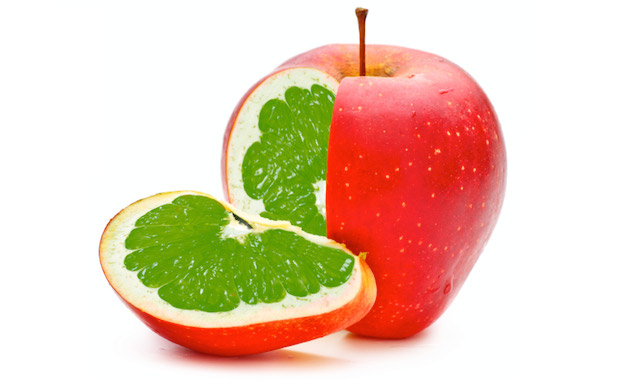What is a Plant-Based Diet And Why Should You Start?
June 22, 2020
There’s a lot of buzz about plant-based diets, but it might not resonate with you. We hear “diet” and think it’s a temporary plan. We hear plant-based and think “salad” or vegetarian only, or even Vegan. And while vegetarian and vegan are plant-based, they can also be full of unhealthy food (junk food vegetarians are not that uncommon).
Plant-based diets basically mean a diet of real, whole foods that emphasizes plants. And yes, you can eat small amounts of (quality) meat if you so choose. It’s also a lifestyle, not a short duration diet.
So What Can You Eat?
Plant-based diets are ones where the main food choices are vegetables, whole grains, legumes, nuts, seeds, fruits, plant-based oils, and herbs and spices. They also can include plant-based proteins like tofu and tempeh and the new popular plant-based burgers. With a potential shortage of meat on the horizon, and the health benefits of eating plant-based, it is the perfect time to make the shift to a healthier diet.
What About Dessert?
We don’t like to say never. So letting a less healthy meal sneak in here and there (moderation) is a way to take the pressure off yourself. Eating plant-based 80-90% of the time would be an ideal goal, leaving a little lee-way should you desire something else. Of course, while plant food diets try to exclude sweets, every so often a treat is ok. Try to choose something like organic dark chocolate, homemade banana bread, or a real fruit-based smoothie. And homemade is better than store-bought most times. Switch beverages from sugary ones to water with lemon or seltzer. Switch white bread and refined pasta to whole grain or something like lentil pasta. Replace packaged food like cookies with making some homemade delicious healthy versions. Eliminate or severely reduce processed meats like bacon and sausage.
The Benefits of Plant-Based Eating
Plant-based eating is not a diet, nor a fad, nor something extreme that can be hard to stick to. Most people who start eating this way feel healthier, have more energy, look better, and even lose weight. In the long run, they are vastly improving their health outcomes.
So, are you ready to switch to plant-based eating? There are some simple changes you can make starting today. Here are some ways to get you going on nutritious plant-based meals:
- Start by hitting the grocery store with a list. Buy only fruits, vegetables, whole grains, and nuts (if you eat them). Limit or skip processed foods, meats, dairy, and candy. If it’s not in the house you can’t eat it.
- Switch snacks to fruits or nuts. If you previously snacked on anything refined and processes like salty chips or cookies, this is a big (and healthy) change right here!
- Google some simple swaps. For example, you can make a delicious pancake with a mashed banana, an egg, and a tablespoon of flour. You can cook a vegetable burger or make a grilled portobello mushroom burger in lieu of meat. Making chili or tacos? Try an all bean chili or replace half the meat in either with beans.
- Fix a big salad early in the day so you can have some with lunch and some with dinner. Replacing starches and pasta with salad is the way to go.
- Grow your own vegetable garden. Picking fresh off the plants encourages healthy eating for the whole family.
- Fill the fruit bowl (and fridge). A full fruit bowl encourages healthy snacking. When a sweet craving comes along too, it’s often satisfied by ripe peaches, fresh strawberries, watermelon, pineapples, or bananas.
- Look at your plate. It should be filled 75% or so with vegetables, allowing the other 25% for whole grains, some lean protein, legumes, and a sprinkling of nuts or seeds.
- While most plant food-based diets drastically reduce meat and animal products, you can eat some if you chose. A few small cubes of cheese or a lean cut of grass-fed beef, some eggs, seafood, or a little chicken is perfectly acceptable. Just try to limit the meat to 1-2 times a week.
- Make pantry switches. No more sugary cereals ( there are plenty of organic, whole grain, low sugar ones). Switch cows milk to a non-dairy one like almond milk, hemp milk, or oat milk.
- Shop at the farmers’ markets. Not only do you support local small business, but they also have no refined products for sale. Fresh fruits, vegetables, and other healthy choices like local honey and fresh homemade grain bread will fill your bag with happiness, won’t it?
To finish, I’d say the best way to switch is to educate yourself. Pick up some plant based diet books at the library or download to your kindle for great recipe ideas. Read around and make a long list of what you already love and what you want to try. Browse Pinterest for recipe ideas and you may very well find dozens to add to your list. On Instagram, there are so many pages which show fantastic pictures and recipes of meals that are plant based, vegetarian or vegan. Even non vegans can love vegan meals! It’s exciting to find new healthy meals!
With this extra time at home, more of us are cooking anyway, so it’s a perfect time to transition to plant based eating!




